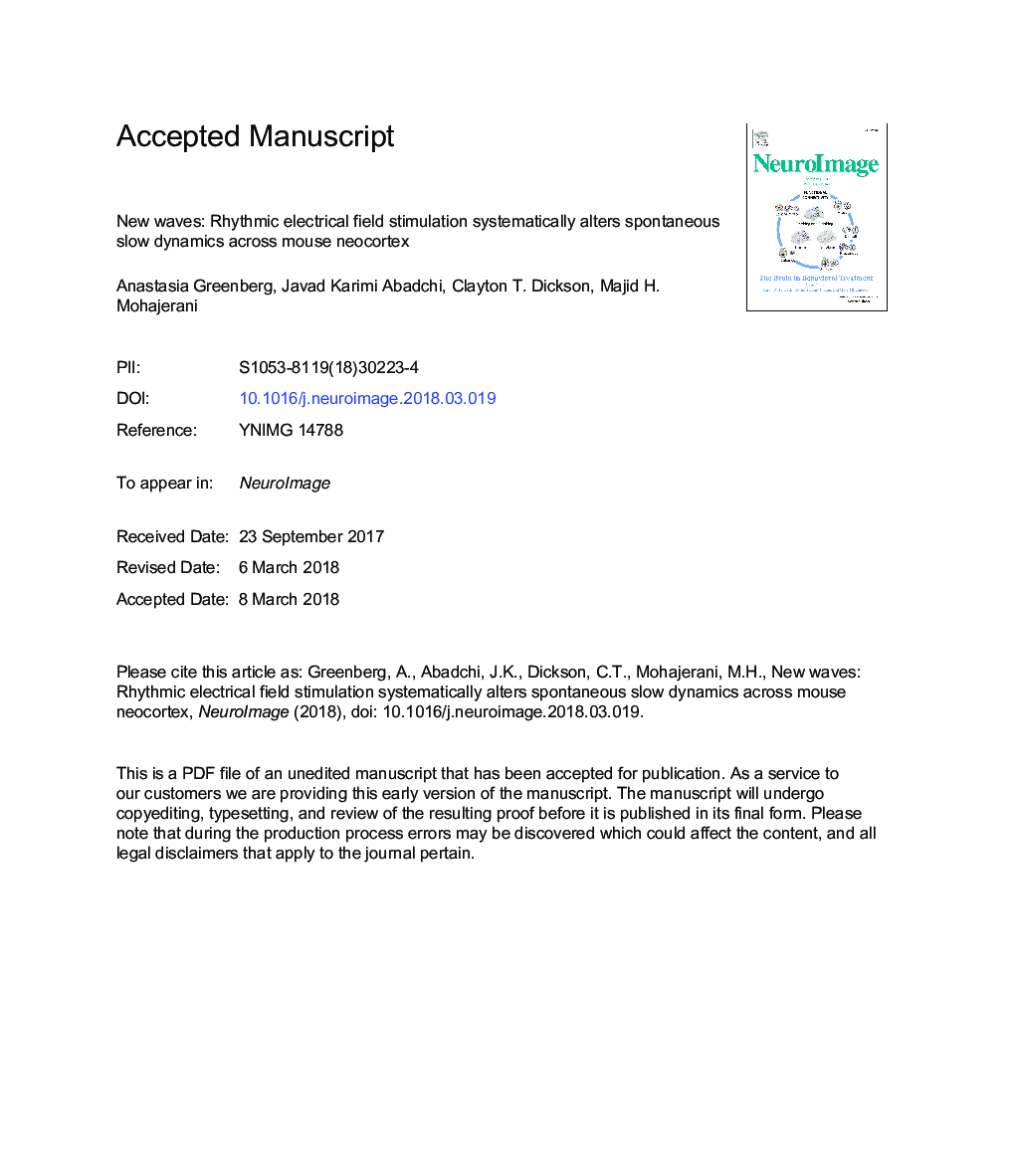| Article ID | Journal | Published Year | Pages | File Type |
|---|---|---|---|---|
| 8686925 | NeuroImage | 2018 | 47 Pages |
Abstract
The signature rhythm of slow-wave forebrain activity is the large amplitude, slow oscillation (SO: â¼1â¯Hz) made up of alternating synchronous periods of activity and silence at the single cell and network levels. On each wave, the SO originates at a unique location and propagates across the neocortex. Attempts to manipulate SO activity using electrical fields have been shown to entrain cortical networks and enhance memory performance. However, neural activity during this manipulation has remained elusive due to methodological issues in typical electrical recordings. Here we took advantage of voltage-sensitive dye (VSD) imaging in a bilateral cortical preparation of urethane-anesthetized mice to track SO cortical activity and its modulation by sinusoidal electrical field stimulation applied to frontal regions. We show that under spontaneous conditions, the SO propagates in two main opposing directional patterns along an anterior lateral - posterior medial axis, displaying a rich variety of possible trajectories on any given wave. Under rhythmic field stimulation, new propagation patterns emerge, which are not observed under spontaneous conditions, reflecting stimulus-entrained activity with distributed and varied anterior initiation zones and a consistent termination zone in the posterior somatosensory cortex. Furthermore, stimulus-induced activity patterns tend to repeat cycle after cycle, showing higher stereotypy than during spontaneous activity. Our results show that slow electrical field stimulation robustly entrains and alters ongoing slow cortical dynamics during sleep-like states, suggesting a mechanism for targeting specific cortical representations to manipulate memory processes.
Related Topics
Life Sciences
Neuroscience
Cognitive Neuroscience
Authors
Anastasia Greenberg, Javad Karimi Abadchi, Clayton T. Dickson, Majid H. Mohajerani,
